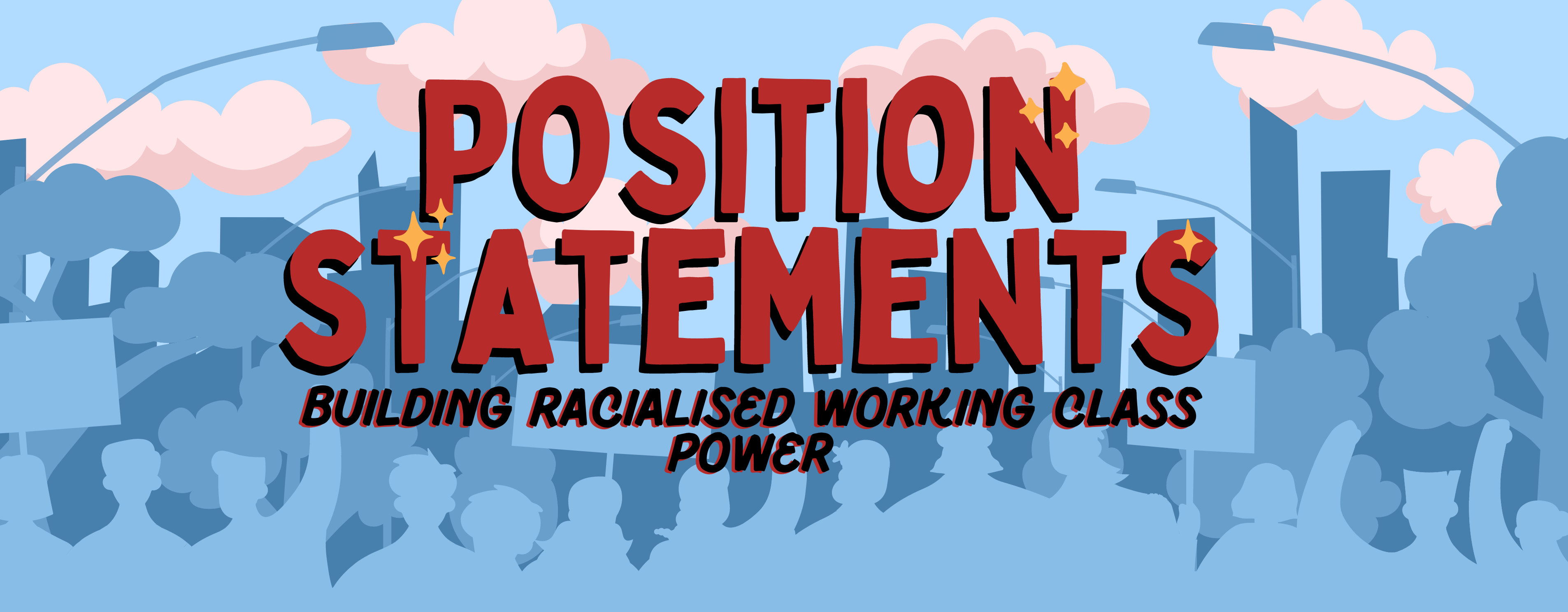The most exploited and oppressed people in our context are under-represented within unions and organisations on the left. This means many who face the most injustice are without important tools to fight it, nor the means to shape class struggle into the future. In order to correct this, programs must be built that are capable of overcoming current barriers to participation to build the power of the racialised working class.
The goal of ARC UP is to build such a program. We seek to maintain a majority membership of racialised working class people, so that we can construct and then test our program as an organised force within migrant workplaces and communities, movements for Sovereignty and Land Back, and within the broader workers’ movement, against other organised forces that would inhibit real power being developed.
For instance, most battles the contemporary union movement still fight are in the workplace. For many this is what class struggle is, but this orientation excludes migrant workers, whose visa issues are the biggest determinant of their workplace issues. A class struggle that works for migrants would need to take coordinated aim at an abusive visa system that traps migrant workers in super-exploitative workplaces under fear of deportation, or restricts their ability to legally work enough hours to survive. In other countries, independent unions of migrant workers are finding they are more effective in organising visa-precarious, temporary, casual and gig workers outside of the existing bureaucratised unions.
In so-called Canada, migrant care workers ensured their ability to collectively bargain on par with a large part of the working class by winning permanent residency. Other countries like Spain have managed to change legislation that establishes gig workers as employees, against the likes of Uber arguing that they are self-employed through an app. This establishes Uber as responsible for minimum wage and other protections for their workers. This strategy would have to harness the power of migrant workers rather than just a legal team, but whether inside or outside existing unions, these are the struggles that need to be built now, so that a renewed workers movement might lift all workers.
In addition, the orientation of workers power for workplace issues has forced First Nations social movements to build power from sources other than the union movement. In fact, many First Nations activists no longer look to the union movement for solidarity at all, and understandably so. Workers power must be mobilised in solidarity with Indigenous sovereignty, but real workers power can’t be requested from a complacent union leadership, it must again be built from below at the rank and file level.
Rather than looking elsewhere for power that doesn’t win our demands, racialised people and workers should join together to build the kind of workers movement that can have everyone’s back. This requires organisation, education, political agreement, shared strategic aims, comradeship and broad solidarity, which our organisation is tailor-made to provide. After 50 years of diminishing workers power and thus diminishing wins for the left, the way forward is clear — we must build power proven to be capable of winning.
